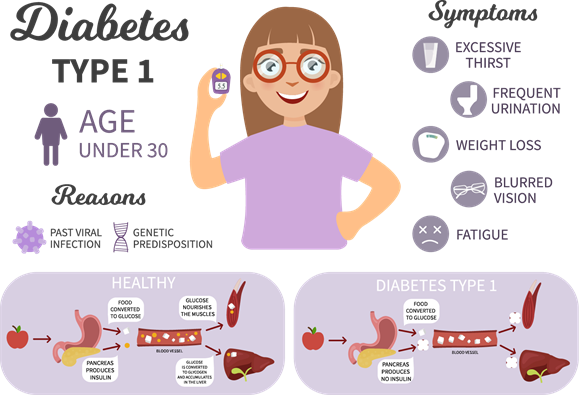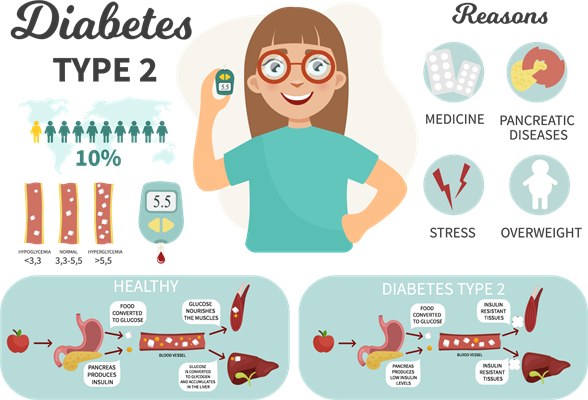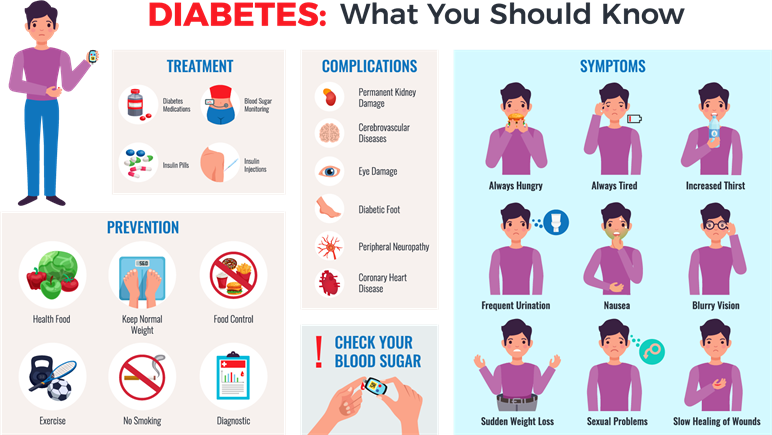
PUMPA - SMART LEARNING
எங்கள் ஆசிரியர்களுடன் 1-ஆன்-1 ஆலோசனை நேரத்தைப் பெறுங்கள். டாப்பர் ஆவதற்கு நாங்கள் பயிற்சி அளிப்போம்
Book Free DemoDiseases are widespread in our society due to our poor way of life, stress, and strain. These diseases are non-communicable and affect only those who exhibit specific symptoms. It is an impairment of body tissue or organ and disturbances in metabolic function that necessitates changes in everyday life.
Lifestyle changes cause several diseases such as diabetes, obesity and heart disease. Regular physical activity aids in the prevention of obesity, heart disease, hypertension, diabetes, and premature death.
Diabetes is a condition that occurs when your blood sugar levels are abnormally high. Blood glucose is our primary source of energy, obtained from the food we consume. Insulin, a hormone produced by the pancreas, aids in transporting glucose from food into our cells for use as energy.
Sometimes our bodies do not produce enough insulin. So, glucose remains in our blood and does not reach our cells. Having too much glucose in our blood can lead to health problems over time. Although there is no cure for diabetes, we can take steps to manage it and stay healthy.
If someone has diabetes, making lifestyle changes can help them control the disease's severity. They must consume nutritious foods. They should exercise regularly. They should be stress-free, and they should abstain from tobacco and alcohol. All of these factors contribute to their ability to live healthy lives. In this section, we will study Diabetes Mellitus and its types.
Diabetes Mellitus:
Diabetes mellitus is a metabolic disorder that lasts for a long time. In Greek, Diabetes means "running through", and Mellitus means "sweet". It is distinguished by elevated blood glucose levels resulting from insufficient, deficient, or failedinsulin secretion.
Type- \(1\) Insulin Dependent Diabetes Mellitus (IDDM)
Causes: This condition is caused by genetic inheritance and environmental factors such as virus infections and acute stress.

A picture explains the reasons and symptoms of Type-1 Diabetes Mellitus.
Type-\(2\) Non-Insulin Dependent Diabetes Mellitus (NIDDM)
Type-\(2\) Non-Insulin dependent diabetes is also known as adult-onset diabetes, and it accounts for \(80\) to \(90\)% of the diabetic population. It develops slowly and is usually milder and more stable.

Diabetes mellitus is associated with many metabolic changes. A few essential symptoms are listed below:
• Hyperglycemia - Increased blood glucose level.

- According to the World Health Organization, diabetes will be the seventh leading cause of death by \(2030\).
- People with diabetes account for one out of every eight people in India. According to revised WHO estimates, India will have \(57.2\) million diabetics by \(2025\).
- The average age of onset diabetes in the India is \(40\) years, while 55 years in other countries.
- According to WHO guidelines, if the fasting blood glucose level is greater than \(140\ mg/dl\ \)or the random blood glucose level is greater than \(200\ mg/dl\ \)on more than two occasions, confirming diabetes is necessary.